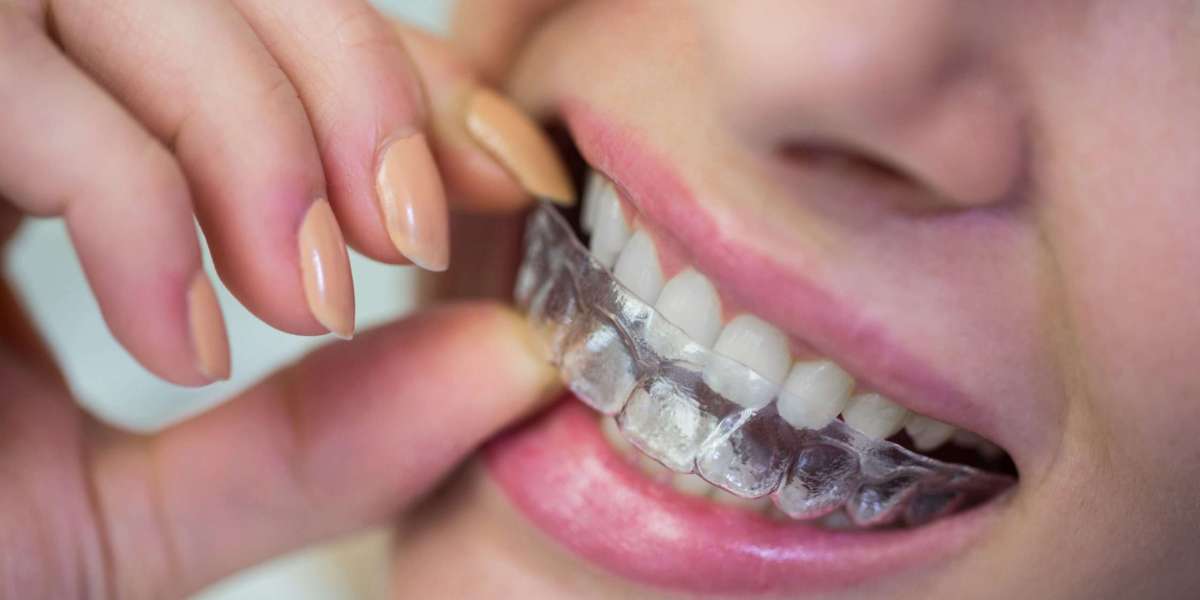For decades, braces have been the go-to solution for straightening teeth, but the introduction of Invisalign has given patients a more discreet option. Both treatments are proven to correct misaligned teeth, improve oral health, and enhance smiles, but they differ in appearance, comfort, maintenance, and lifestyle impact. Understanding these differences is key to making the right decision for your needs.
If you’re weighing your options, the Invisalign vs Braces Comparison guide can help you explore treatment differences in detail, from cost and comfort to treatment timelines and long-term results.
How They Work
Invisalign uses a series of custom-made, clear aligners that gradually move teeth into their proper positions. These aligners are changed every one to two weeks, with each set designed to make small, precise adjustments.
Braces, on the other hand, use metal or ceramic brackets attached to each tooth, connected by wires and elastic bands. Your orthodontist adjusts them periodically to tighten the wire and guide your teeth into alignment.
Appearance and Aesthetics
For many adults and teens, appearance is a major deciding factor.
Invisalign: Clear and virtually invisible, making it the preferred choice for patients who want a discreet treatment option.
Braces: More noticeable, though ceramic or clear braces can help minimize visibility.
While Invisalign offers a nearly invisible look, braces remain a dependable choice for those unconcerned about aesthetics or those needing more complex adjustments.
Comfort and Fit
Comfort can vary between the two treatments.
Invisalign: Made from smooth plastic, Invisalign aligners typically cause less irritation to the cheeks and gums. However, some patients may experience mild discomfort during the first days of wearing a new set.
Braces: The brackets and wires can cause irritation, especially early in treatment or after adjustments. Orthodontic wax can help reduce friction.
Treatment Time
Treatment length often depends on the severity of the dental issue.
Invisalign: Average treatment time ranges from 12 to 18 months, with some cases completed in as little as 6 months.
Braces: Typically 18 to 24 months, though severe misalignments may take longer.
Both options require consistent follow-up visits to monitor progress and make necessary adjustments.
Maintenance and Daily Routine
Daily habits can influence which option works better for you.
Invisalign: Aligners must be removed before eating or drinking anything besides water. They need to be cleaned daily to prevent staining and bacteria buildup.
Braces: Require careful brushing and flossing to clean around brackets and wires. Certain foods, like sticky candies and hard snacks, must be avoided to prevent damage.
For disciplined patients willing to follow the rules, Invisalign offers more flexibility. For those who might forget to wear aligners as directed, braces ensure consistent treatment.
Cost and Affordability
The cost for both treatments is often comparable, though Invisalign can be slightly more expensive in some cases. Factors such as case complexity, treatment duration, and location can affect pricing.
Many dental offices offer payment plans or financing, making both options accessible to more patients. Insurance may also cover part of the cost for orthodontic care, regardless of the method chosen.
Pros and Cons Overview
Invisalign Pros:
Nearly invisible appearance
Comfortable and removable
No food restrictions
Invisalign Cons:
Requires strict patient compliance
Not ideal for extremely complex cases
Braces Pros:
Works for all levels of misalignment
No need to remember to wear aligners
Often slightly faster for certain severe cases
Braces Cons:
More noticeable
Food restrictions and more complex cleaning routine
Which One Is Right for You?
Your decision will depend on your dental health, personal preferences, and lifestyle. Invisalign suits those seeking a discreet, flexible option, especially for mild to moderate cases. Braces are better suited for patients needing significant corrections or who prefer a more hands-off approach.
An orthodontist can evaluate your teeth, discuss goals, and recommend the most effective treatment based on your needs.
Final Thoughts
In the Invisalign vs braces decision, both are highly effective solutions for achieving a straighter smile and better oral health. Choosing between them means weighing comfort, aesthetics, treatment time, and lifestyle habits. No matter which you choose, consistent care and follow-up visits will help ensure long-lasting results.







